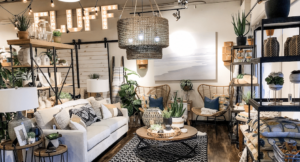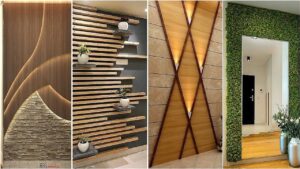When Sarah moved into her new apartment, she was excited about transforming the space into a cosy, green oasis. However, she quickly realized that her apartment didn’t get much natural light. Determined not to give up on her dream of having indoor plants, Sarah began researching low-light indoor plants that would thrive even in the darker corners of her home. Soon, her living room was filled with thriving ferns, snake plants, and pothos that added life to her space without needing constant sunlight.
Why Choose Low Light Indoor Plants?
Finding indoor plants that can thrive without direct sunlight is a common challenge for many living in apartments or homes with limited natural light. According to a study by the National Gardening Association, 30% of American households now grow plants indoors for decoration, air purification, or to bring a touch of nature into their homes. Low-light indoor plants are perfect for those who want to enjoy the benefits of indoor greenery without needing constant sunlight.
These plants have adapted to survive in shaded or low-light environments, making them ideal for rooms with north-facing windows or spaces that don’t get direct sunlight. Whether you want to brighten up a dark corner of your living room or add some green to your office space, plenty of plant options will thrive with minimal light.
The Benefits of Low-Light Indoor Plants
Low light indoor plants offer numerous benefits beyond aesthetics. They can improve indoor air quality, boost mood, and create a calming atmosphere. According to NASA’s Clean Air Study, certain indoor plants, such as formaldehyde, benzene, and ammonia, can remove harmful toxins from the air. Plants like the snake plant (Sansevieria) and peace lily (Spathiphyllum) are particularly effective at purifying the air in low-light conditions.
Additionally, having plants in your living or working space has been shown to reduce stress and increase productivity. A study published in the Journal of Environmental Psychology found that people with plants in their workspace report 15% higher productivity and lower stress levels than those without plants.
Popular Low Light Indoor Plants
When choosing low light indoor plants, many species are beautiful and easy to care for. Here are some of the most popular options that thrive in low-light conditions:
- Snake Plant (Sansevieria): The snake plant, also known as the mother-in-law’s tongue, is one of the most resilient indoor plants. It can survive in low light and is known for its ability to filter indoor air by removing toxins. According to NASA, the snake plant is one of the top air-purifying plants and requires minimal water, making it ideal for beginners.
- ZZ Plant (Zamioculcas zamiifolia): The ZZ plant is another low-maintenance option that thrives in low-light environments. Its glossy, dark green leaves make it a stylish addition to any room, and it can go for weeks without water. The ZZ plant is known for its tolerance of neglect, making it an excellent choice for busy individuals or those new to plant care.
- Pothos (Epipremnum aureum): Often called the “Devil’s Ivy,” pothos is a fast-growing, trailing plant that can thrive in low light. It’s known for its heart-shaped leaves, which come in various shades of green and variegated patterns. According to the Journal of the American Society for Horticultural Science, Pothos is also highly effective at removing indoor air pollutants.
- Peace Lily (Spathiphyllum): The peace lily is a beautiful flowering plant that can thrive in low-light conditions. Its elegant white flowers and glossy green leaves make it a popular choice for indoor spaces. In addition to its aesthetic appeal, the peace lily is known for its air-purifying qualities and ability to reduce mould spores.
- Philodendron: Philodendrons are popular indoor plants that are well-suited to low-light conditions. Their lush, green leaves and trailing vines add a tropical feel to any room. Like the pothos, philodendrons are also known for removing toxins from the air, making them an excellent choice for improving indoor air quality.
How to Care for Low Light Indoor Plants
One of the advantages of low light indoor plants is that they generally require less maintenance than plants that need more sunlight. However, there are still some essential care tips to keep in mind to ensure your plants thrive:
- Watering: Overwatering is one of the most common mistakes people make with indoor plants, especially those in low-light environments. Low-light plants typically require less water because they don’t photosynthesize as much as plants in bright light. Ensure the soil is dry to the touch before watering, and avoid letting the plants sit in water, which can lead to root rot.
- Soil: Using well-draining soil is essential for low-light plants. Most indoor plants prefer soil that allows excess water to drain quickly, preventing waterlogged roots. A mix of regular potting soil and perlite or sand can help with drainage.
- Humidity: Many low-light plants thrive in environments with higher humidity, mainly tropical varieties like the peace lily and philodendron. Consider misting your plants occasionally or placing them near a humidifier if your indoor air is arid.
- Fertilizing: Low-light plants don’t require as much sunlight but still benefit from regular feeding. Use a balanced liquid fertilizer every month during the growing season (spring and summer) to promote healthy growth.
The Popularity of Indoor Plants: A Growing Trend
The popularity of indoor plants, particularly low-light varieties, can be attributed to several factors, including the growing urban population, increased awareness of wellness and air quality, and the shift towards home-based work environments. According to a report by the National Gardening Survey, the indoor plant industry saw a 50% increase in sales between 2020 and 2023, with millennials making up the largest group of plant buyers.
Furthermore, the trend toward biophilic design—bringing elements of nature into indoor spaces—has contributed to the growing demand for indoor plants. This design philosophy emphasizes the importance of nature in improving mental well-being, productivity, and creativity. Incorporating low-light plants into homes and offices is an easy and affordable way to bring nature indoors.
Designing with Low-Light Plants
Low-light indoor plants are not only functional but also versatile in terms of design. Whether you want to create a lush, tropical atmosphere or a minimalist, modern space, these plants can enhance your home’s aesthetic in various ways.
- Hanging plants: Pothos and philodendrons make excellent hanging plants, perfect for creating vertical green walls or adding interest to high shelves.
- Floor plans: Snake and ZZ plants fill empty corners or frame furniture. Their tall, upright structure adds height and visual interest to a room.
- Tabletop accents: Smaller low-light plants like peace lilies or ferns can be placed on coffee tables, desks, or windowsills for a touch of greenery.
Conclusion: Bringing Greenery into Any Space
For Sarah, filling her apartment with low-light indoor plants transformed her living space into a welcoming, serene retreat. She created an environment that felt vibrant and alive with minimal sunlight but the right plant choices. Whether working in a dimly lit room or simply wanting to add some greenery to your home, low-light indoor plants are an easy and rewarding way to bring nature indoors.
The benefits of indoor plants are undeniable, from improving air quality to boosting mood and productivity. With a wide range of options available, anyone can enjoy the beauty of plants, even in low-light conditions. By choosing the right plants and providing proper care, you can create your green oasis, no matter how much sunlight your space receives.






